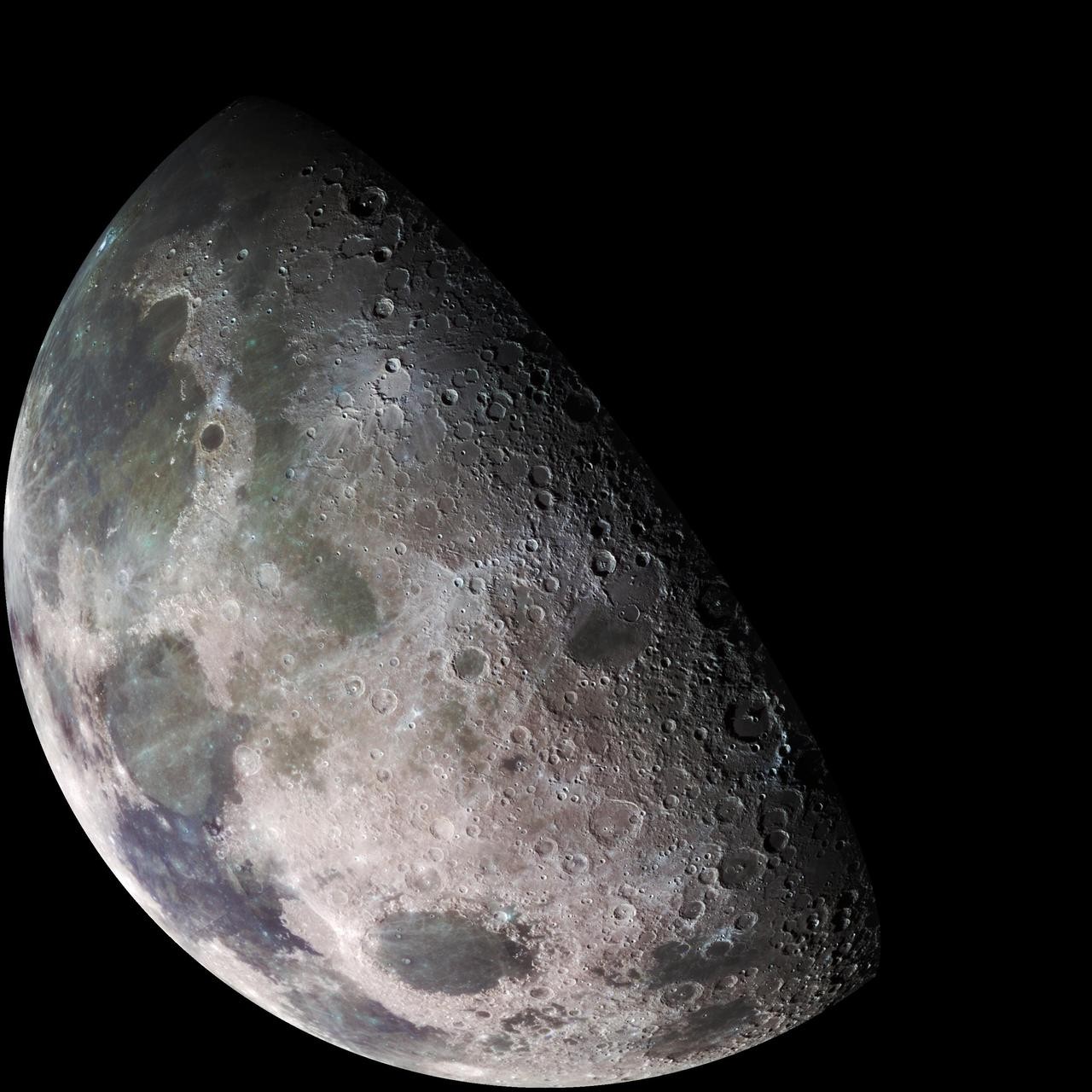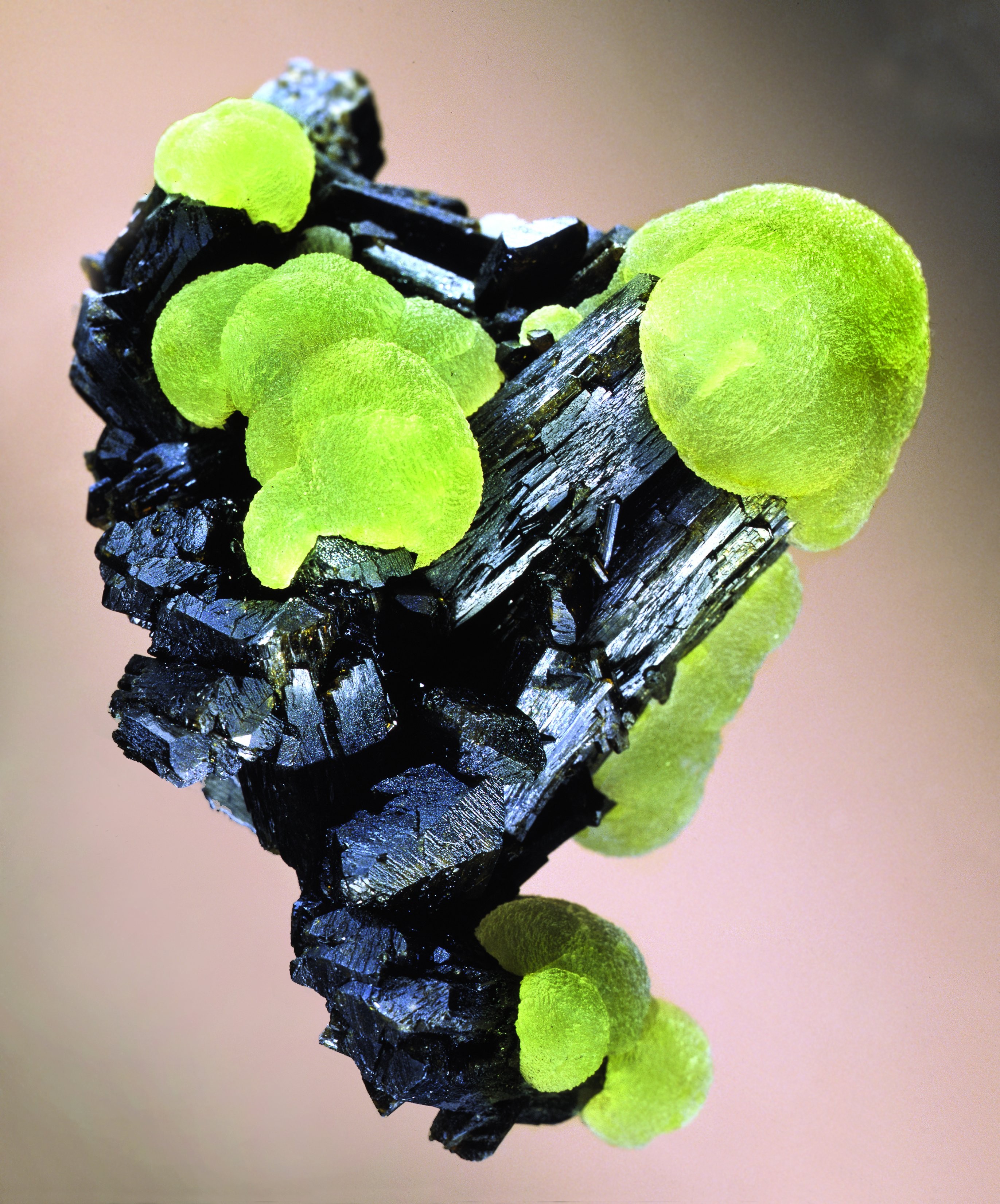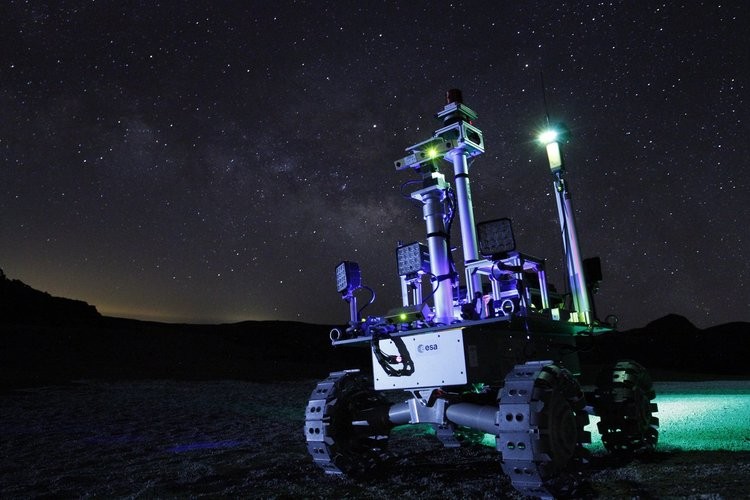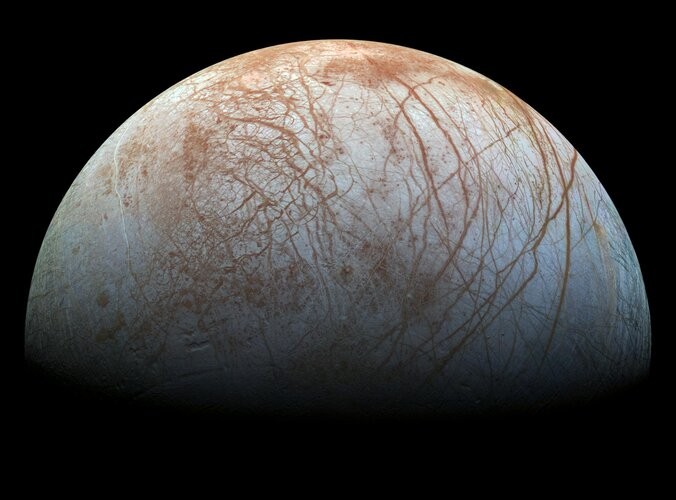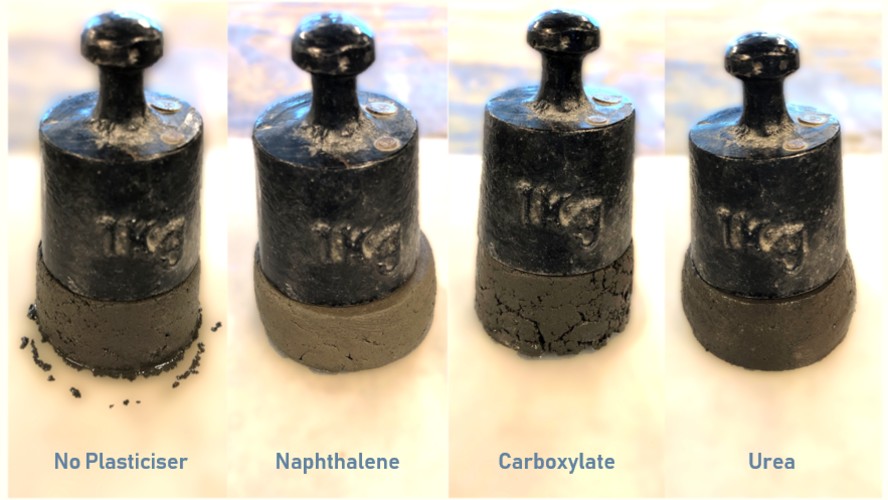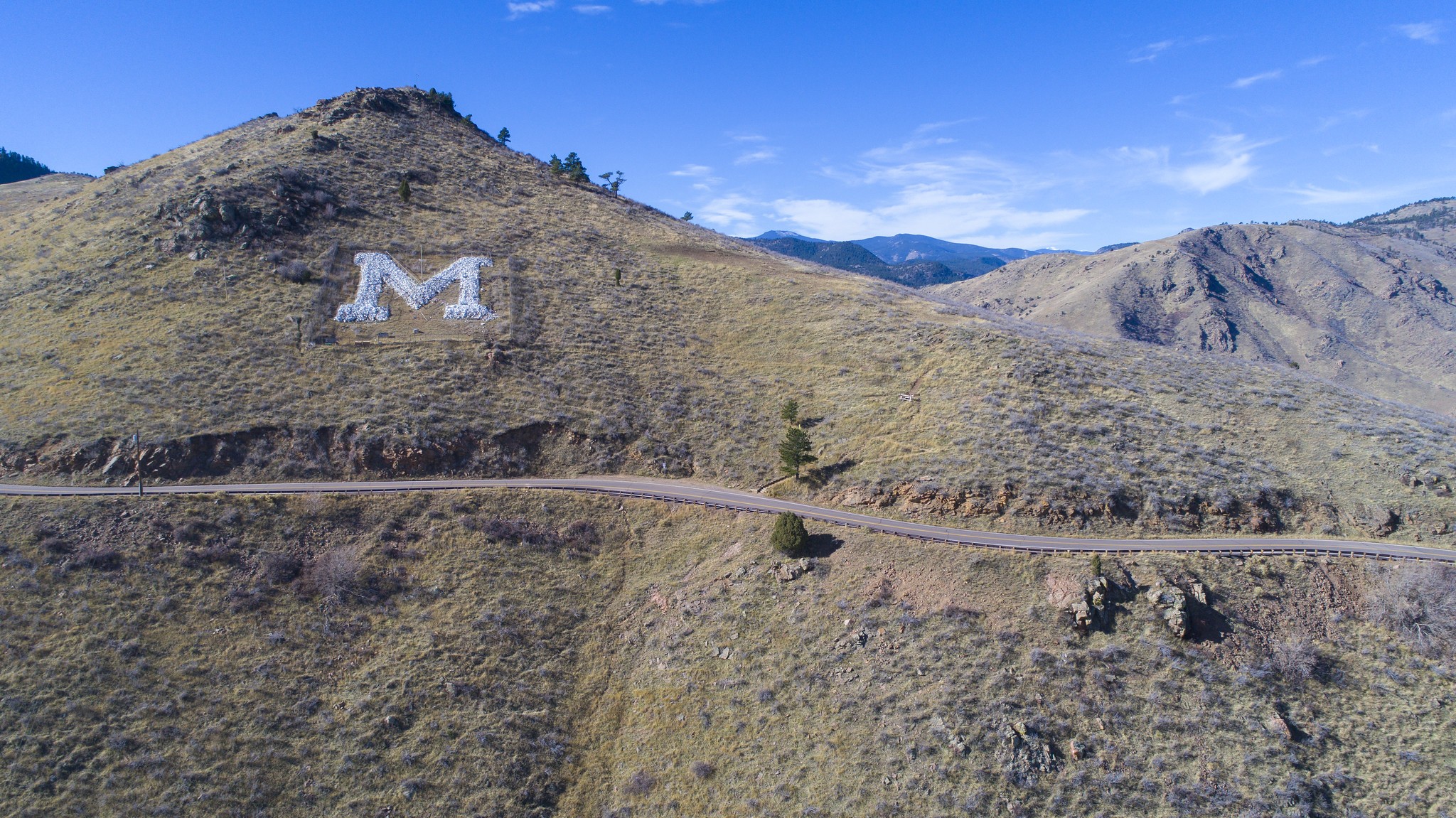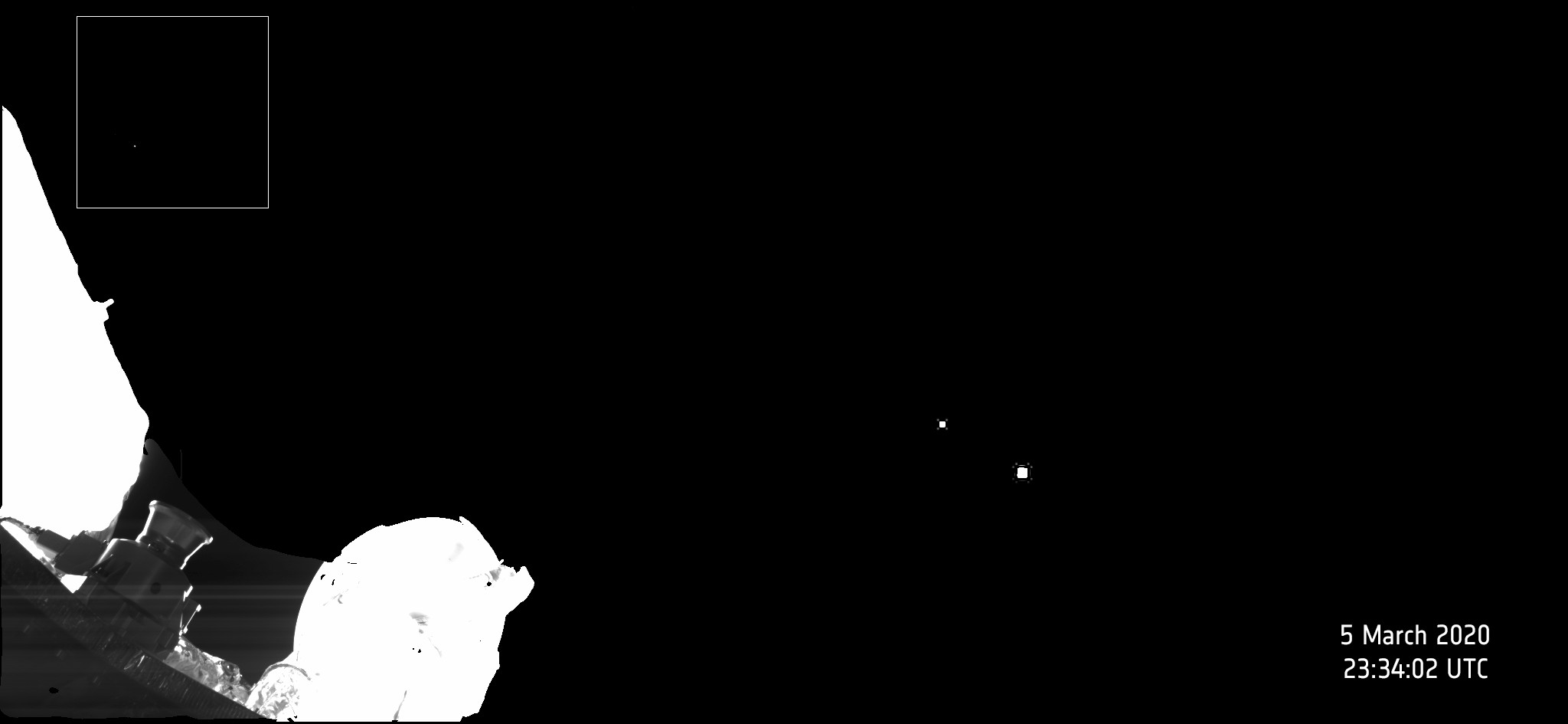Science
-
6 years ago
When humans settle on Mars, houses could be 3D-printed
MinesNewsRoomWhen the first humans settle on Mars, what if their homes were not built but printed? That's the question being posed in the latest NASA Centennial Challenge, pitting teams from industry and academia to design and 3D-print habitats using materials that can be found on the Martian surface. "The great thing about 3D printing is trying to make it as autonomous as possible," said Grant McHargue, a senior majoring in mechanical engineering and a member of last year's winning NASA RASC-AL team. "You could hypothetically send the system to the Moon or Mars a year or two before the astronauts get there and have rovers collecting materials and mixing everything. You could have fully livable, fully working habitats for astronauts when they get there." McHargue is the leader of the Mines Capstone Design team in the hunt for a spot in the finals of the NASA 3D-Printed Habitat Challenge. Partnering with the students is ICON, an Austin, Texas-based startup that specializes in 3D printing full-size homes. The Mines-ICON team placed fourth in the most recent round of the NASA competition, earning $23,000 in February. If chosen for the finals April 29-May 4, the Mines team will travel to Caterpillar's headquarters in Peoria, Illinois, where they will compete head-to-head against companies and universities to print one-third-scale models of their habitat designs. "This kind of research is being done at various places – not just the NASA Challenge teams but NASA is working on it as well at the Marshall Space Flight Center in Alabama and Kennedy Space Center in Florida," said Christopher Dreyer, the Capstone project sponsor and research assistant professor in the Space Resources Program. "That our Mines team is vying for a place in the finals of this challenge just speaks to the caliber of our students – through competitions like this, they have a real opportunity to contribute to the emerging technical challenges related to deep space exploration and the use of resources in space." Students have been working on the habitat since January 2018 through multiple virtual design and construction rounds. With help from a $100,000 donation from ICON, they built their gantry-style 3D printer in August outside the Excavation Engineering and Earth Mechanics Institute (EMI). The printer – which stands at 23 feet by 25 feet by 15 feet – consists of a robotic system that moves the print head and a concrete prep and pumping system. Their custom concrete mix is made from materials that exist naturally on Mars: a magnesium oxide-based cement and a basaltic cinder aggregate. "Magnesium oxide cement can be used in lower temperatures than Portland cement, the more popular option on Earth," Dreyer said. "It's a mix that's used in quick repairs for various things like airport runways. It can set very quickly." Finding the exact right consistency for that magnesium-oxide concrete has been one of the students' biggest challenges, McHargue said. Too thick and it gums up the printer. Too thin and it runs everywhere and won't stack. Refining the printer's water delivery system and delivery of the dry mix has helped improve their control. McHargue's group is the second cohort of Capstone Design students to work on the habitat project – they overlapped last semester with the other team, whose members graduated in December 2018. Rounding out this semester's team are mechanical engineering students Nicole Stackhouse, Ben English, Geoffrey Keating, Bryce Bartolomeo and Garon Kirschbaum. Past team members were Kevin Shaw, Austin Muck, Zhao Pan, Elizabeth Goss and David Ademe. The benefit of using materials available on Mars or the Moon all comes down to cost, McHargue said. "It's extremely expensive to launch things into space – $4,000 per kilogram just to get to low Earth orbit. Our one-third-scale print alone would have 7,000 to 9,000 kilograms of material," McHargue said. "If you're able to gather all those materials on Mars or the Moon and use that instead, that would be much more cost-effective and much easier. Plus, if you don't have enough material, you can just go out and collect some more, instead of saying, oh, well, in seven to 10 years we'll launch another rocket to you, just hold on." For the competition, habitat designs were required to include 1,000 square feet of living space to support four astronauts for one year, as well as plans for systems such as life support, mechanical and electrical, spacesuit and rover hatches and plumbing. The Mines habitat is a two-level dome, with the astronauts' bedrooms located on the second floor to separate them from the work spaces below. Those work spaces include a dry lab for electronics and computer work and a wet lab completely sealed from the rest of the habitat. The entry area features two different ports – one for entering and exiting a rover parked outside and the other to jump in and out of a spacesuit. "One of the things that's unique about our design is we included a little garden area – it wasn't meant for growing food like in The Martian with potatoes, but it's a wellness area, an area for the astronauts to sit and have some greenery," McHargue said. The partnership with ICON came about through the Mines Space Resources Program – CEO Jason Ballard was a student in Dreyer's Space Resources Fundamentals class last spring. To supplement the generous support from ICON, the team hopes to raise $5,000 through a crowdfunding campaign on Gold Mine – Colorado School of Mines' official crowdfunding platform – that ends next week. Donations will cover travel costs to send the team and its printer to the final stage of the challenge. The crowdfunding campaign runs through April 7. To donate, go to https://www.givecampus.com/nu6khg. CONTACTEmilie Rusch, Public Information Specialist, Communications and Marketing | 303-273-3361 | erusch@mines.eduMark Ramirez, Managing Editor, Communications and Marketing | 303-273-3088 | ramirez@mines.edu
Read More -
6 years ago
New policy needed to advance space resources industry
MinesNewsRoomSpace mining – the extraction and use of resources from the moon, asteroids and more – once sat firmly in the realm of science fiction. Now, the first missions to harvest water from the permanently shadowed regions of the moon could be only a decade away. Earlier this month, a pair of Colorado congressmen introduced legislation to study the creation of a NASA-led Space Resources Institute that would sponsor and lead foundational scientific research and technology development in space resources. At Colorado School of Mines, home to the world’s first graduate program in space resources and the world-class Payne Institute for Public Policy, a group of researchers are calling for policies to be developed now to ensure the advancement of the burgeoning industry. Four professors from the Mines Center for Space Resources and Payne Institute were co-authors on a recently published paper in the journal Issues in Science and Technology of the National Academy of Sciences that sets out a framework for new national and international policy related to the development and use of space resources. The paper represents the first of many planned collaborations between the Payne Institute and the Center for Space Resources on issues of science and policy related to space resources. “As we embark in a new era of exploration and economic expansion into space, it is essential that science and engineering move along with appropriate policies to ensure that resources beyond Earth are utilized in an effective, sustainable, and responsible way,” said co-author Angel Abbud-Madrid, director of the Center for Space Resources. “With 145 years of experience developing these capabilities with terrestrial resources, Mines has unparalleled expertise and a unique opportunity to lead in this new effort.” In addition to Abbud-Madrid, contributing to the paper were Ian Lange, director of the Mineral and Energy Economics program at Mines and a Payne Institute fellow; George Sowers, a professor of practice in the Space Resources Program; and Morgan D. Bazilian, executive director of the Payne Institute and a professor of public policy. The paper’s lead author was Ian Christensen, director of private sector programs at the Secure World Foundation. Currently, the foundation of international space law and policy is the United Nations Treaty on Principles Governing the Activities of States in the Exploration and Use of Outer Space, including the Moon and Other Celestial Bodies, also known as the Outer Space Treaty, which was adopted in 1967 and signed by the United States and 104 other countries. “It states that the Moon and celestial bodies are not subject to national appropriation by claims of sovereignty,” the researchers wrote. “Yet it also states that those same celestial bodies are free for exploration and use by all nations." The treaty calls for nations to establish their own “authorization and supervision” processes to govern commercial space companies and other nongovernmental organizations. But tensions exist, the researchers wrote, since space mining would require some possession right to regions in space. To address those tensions and to ensure “the creation of a vibrant new industry in a manner in which benefit is broad and not limited to just those directly involved,” policies following four basic guidelines should be developed, they argue: Space-based policies should consider the positive and negative lessons learned from extractive industries on Earth. New policies and regulations should take an adaptive approach and be incremental in nature. The concept of benefit, as required by the Outer Space Treaty, must be broadened beyond monetary terms. The basic principles need to be coordinated and shared among nations, to ensure domestic regulatory approaches are “informed, effective and not fragmented.” “Space resources have the potential to spur the next economic revolution for humankind,” the researchers wrote. “It is important in the early days of creating this new industrial sector to develop policies, informed by sound scientific and engineering principles, that enable and encourage progress while anticipating some of the challenges ahead.” Image credit: NASA/JPL/USGS CONTACTEmilie Rusch, Public Information Specialist, Communications and Marketing | 303-273-3361 | erusch@mines.eduMark Ramirez, Managing Editor, Communications and Marketing | 303-273-3088 | ramirez@mines.edu
Read More -
6 years ago
Mooney discusses Norway's proposed 'floating tunnel' with NBC News
MinesNewsRoomMike Mooney, professer and Grewcock Chair of Underground Construction and Tunneling at Colorado School of Mines, was recently interviewed by NBC News Mach for a story about Norway's proposed "floating tunnel." The submerged roadway, along with new bridges and conventional tunnels, would connect the cities of Kristiansand in the south and Trondheim in the north -- a trip that currently requires some 21 hours and multiple ferry rides. From the article: Michael Mooney, a civil and environmental engineer at the Colorado School of Mines, said the trickiest part of designing and building a first-of-its-kind large structure would be anticipating all the possible hiccups. “You want to make sure you think of all the potential load scenarios or things like wave motion,” said Mooney, who isn’t involved with the Norwegian project. “The big challenge is recognizing where all the issues are and not being surprised by something.”
Read More -
6 years ago
Mineral collection worth $3.2M donated to Geology Museum
MinesNewsRoomA show-stopping collection of minerals valued at $3.2 million has been donated to the Mines Geology Museum. The 27 specimens — remarkable for their pristine condition, color and crystal form — come from the personal collection of Eric Long, an oil and gas industry veteran based in Austin. "A donation of this caliber truly elevates the quality of our exhibits and also heightens the experience for our visitors. Mr. Long is a mineral connoisseur and the quality of these specimens clearly reflects that," said Renata Lafler, executive director of the Mines Geology Museum. "We are absolutely thrilled to share this generous contribution with the public and encourage everyone to come see these natural works of art." Long, president and CEO of USA Compression Partners, has been a serious mineral collector for more than a decade. A graduate of Texas A&M, he was first introduced to the Mines Geology Museum a number of years ago by Mines alumnus Hugh Harvey '74 MS '80, who happens to be one of the neighbors in the mountain neighborhood where Long and his wife, Tracy Walsh, a Colorado native, have a home. "The Mines Geology Museum is a real gem and Tracy and I are so excited to be able to make the donation," Long said. "Both the museum and Colorado School of Mines have so many opportunities from an educational perspective to help open people's minds about the extractive industries, and we hope that these beautiful minerals can help serve as a gateway. With this collection, I hope we can stimulate a love affair for the natural beauty we see in the world and get kids and their parents hooked. What better way to encourage kids' interest in STEM topics than by stimulating their intellectual curiosity through minerals." The gift marks Long's fifth to the museum over the past five years. Among the eye-catching specimens included in the latest donation are: Blue topaz from Brazil: Most topaz is colorless or brown and synthetically treated and irradiated to turn a deep blue. This rare specimen is that same blue color by nature. Wire silver from China: These delicate wires are typically found in the uppermost regions of silver mines — layers that were exposed and mined centuries ago across much of the world. In China, where mining activity is newer, they're uncovering impressive silver wires like this one today, with the help of modern technology. Green prehnite from Mali: Prehnite is actually found in very small quantities on Golden's Table Mountain — although nothing like this specimen. The electric-green prehnite clusters on an epidote base once appeared on the cover of The Mineralogical Record. "From a geologic perspective, they're all very unusual and they're all very special and they all have a wow factor — you look at them and go, wow, that's really pretty or that's bizarre," Long said. "I got into collecting rocks as a child because I thought they were pretty. But the more you learn about them - how hard they are to find, how rare good specimens are — it makes you think about the complex science behind their formation tens or hundreds of millions of years ago." The Long donation will be on special display in the Llewellyn Special Exhibits Room through Fall 2019. The specimens will then be incorporated into the museum's permanent displays based on their country of origin. Founded in 1874, the Mines Geology Museum is the second most visited university geology museum in the nation, with more than 22,000 catalogued minerals, as well as significant specimens of meteorites, fossils, gemstones and mining artifacts. The state repository for Colorado's mineral heritage, the museum is also home to one of the state's two Goodwill moon rocks collected during the Apollo 17 mission, a walk-through mine and the Miss Colorado crown. Free to the public, the museum, 1310 Maple St., Golden, is open 9 a.m. to 4 p.m. Monday-Saturday and 1 to 4 p.m. Sunday. For more information, go to mines.edu/geology-museum. Photo credit: Prehnite on Epidote (upper right), Harold & Erica Van Pelt CONTACTEmilie Rusch, Public Information Specialist, Communications and Marketing | 303-273-3361 | erusch@mines.eduRachelle Trujillo, Senior Director of Communications and Marketing, Colorado School of Mines Foundation | 303-273-3526 | rtrujillo@mines.edu
Read More -
6 years ago
Space resources research highlighted in The Denver Post
MinesNewsRoomThe Center for Space Resources at Colorado School of Mines was recently highlighted in The Denver Post as part of an article about proposed federal legislation to create a NASA-led Space Resources Institute. The Space Resources Institute Act, introduced last week in the U.S. House by Colorado Reps. Scott Tipton and Ed Perlmutter, asks NASA to investigate the establishment of a Space Resources Institute to sponsor and lead basic scientific research and technology development enabling the capture and utilization of space resources. From the article: Since the 1990s, the Colorado School of Mines has had a center that researches the development of space resources. The center “focuses on developing core knowledge and gaining design practices in systems for responsible exploration, extraction, and use of resources in the Solar System,” according to its website. George Sowers, a professor of space resources at the School of Mines, said in a statement that creating a space resources program within NASA would ensure the U.S. remains a leader in the field. “As NASA solidifies its plans to return to the moon and then go on to Mars, the utilization of space resources will play a critical enabling role,” Sowers said. “Furthermore, bringing the resources of space within the economic sphere of Earth will spur the next great economic revolution for humankind.”
Read More -
6 years ago
Mines grad student discusses space resources research with NBC News
MinesNewsRoomJared Atkinson, a PhD student in geophysics and researcher in the Center for Space Resources at Colorado School of Mines, was recently interviewed by NBC News about a study he co-authored on mining water on the moon, for an article about NASA's plans to build a moon-orbiting space station and permanent lunar base. From the article: Scientists know the ice is there, but they aren't sure how much. "You can tell there's water there, but you can't tell how deep or easy to access it is," said Jared Atkinson, a graduate student in geophysics at the Colorado School of Mines.
Read More -
7 years ago
Mines student leads top team at Techstars Startup Weekend
MinesNewsRoomA Colorado School of Mines graduate student will get to pitch his space startup at a major international conference for satellite and aerospace professionals this spring – his team’s prize for winning the Techstars Startup Weekend in Boulder last month. James Kiousis, a master’s student in the Engineering and Technology Management program, was the leader of Gold Orbit, the top-scoring team in the 52-hour startup competition, Techstar’s first ever to have a space theme. The team proposed a solution to a major challenge facing the satellite industry – the old satellites and other junk taking up valuable real estate in the Earth’s orbit. “Over 70 percent of satellites up in orbit right now are defunct satellites that are taking up space that could actually be used by functioning satellites,” Kiousis said. “Each new satellite could generate $1.7 billion in revenue over its lifetime.” Gold Orbit’s space debris cleanup module would deploy cables armed with electromagnets to ensnare defunct satellites and remove them from orbit – an approach that could also help future satellite operators comply with new end-of-life standards in the industry. “Companies that send satellites up into orbit are required to have an end-of-life plan now – they have to spend more money on fuel, more money on maintenance, and get it to deorbit on its own or fly into an orbit that's not valuable,” Kiousis said. “We’re proposing a way that they don’t have to worry about an end-of-life program.” Kiousis and his teammates – a group of current students and recent graduates from University of Denver, University of Colorado, South Dakota School of Mines & Technology, Loyola Marymount University and University of British Columbia – actually pivoted to their winning idea over the course of the weekend competition. On the first night, participants pitched ideas and voted on the most interesting ones. Then it was up to them to form teams with diverse skill sets, and not necessarily the friends they arrived with. Kiousis had proposed an asteroid mining company and a multi-university team coalesced around the idea. But as they got to work validating the concept and creating a prototype of their minimum viable product, they decided together to pivot to space debris cleanup. As part of the process, they reached out to industry leaders to get feedback. An email from the CEO of Iridium, a major satellite communications company, helped confirm they were on the right path, Kiousis said. “We ended up pitching the idea in front of the judges and they loved the idea. They loved the team. We ended up winning. It was such an awesome experience,” he said. “I went in just thinking I would have fun and meet some cool people. Now we’re going to be sent out to a conference in D.C.” The SATELLITE 2019 Conference, set for May 6-9 in Washington, D.C., welcomes 15,000 satellite and aerospace professionals every year. Judging the Techstars competition were three space entrepreneurs – Scott Tibbitts, CEO of Katasi Inc.; Bradley Cheetham, CEO of Advanced Space; and Matt Beckner, co-founder and chief operating officer at Blue Canyon Technologies – and Techstars partner Nicole Glaros. “James is a perfect example of a growing number of highly motivated Mines students taking advantage of not only the strong traditional engineering education at Mines but also the diverse and rapidly increasing aerospace-related academic, research and extracurricular activities on campus,” said Angel Abbud-Madrid, director of the Center for Space Resources at Mines. “He took classes on space exploration, space and planetary design and astronomy, became involved as officer in the Mines AIAA student chapter, participated in a NASA lunar mining design competition and is now complementing his undergraduate education with a master’s degree in engineering and technology management – the ideal background to impress all three space entrepreneurs judging his novel space business concept in a startup competition.” Between now and May, Kiousis, who graduated in May with a bachelor’s degree in engineering physics, hopes to continue work on the startup part-time to get more customer validation and find the right people to design the actual module. His fellow teammates are DU students Josh Hoeg and Josh Foreman, CU student Taylor Brooks-Murphy, SDSMT student Jace Johnson, Loyola Marymount graduate Rayne Crossen and University of British Columbia alumnus Bill Flanigan. “I’ve always been interested in space,” Kiousis said. “My sophomore year, I took the Intro to Space Exploration class and my goal was to start an asteroid mining company. Which is funny, because even though we pivoted to space debris cleanup, this still could be applied to asteroid mining in the future." CONTACTEmilie Rusch, Public Information Specialist, Communications and Marketing | 303-273-3361 | erusch@mines.eduMark Ramirez, Managing Editor, Communications and Marketing | 303-273-3088 | ramirez@mines.edu
Read More -
7 years ago
Sowers discusses future lunar settlement with Nature
MinesNewsRoomGeorge Sowers, professor of practice in the space resources program at Colorado School of Mines, was recently interviewed by Nature about what it would take to build a sustainable base on the Moon. From the article: Researchers relish the idea of a base for conducting experiments on the Moon and as a way to trial technologies for heading to Mars. Private firms, however, are increasingly tempted by the possibility of mining oxygen and hydrogen — which power rockets — from lunar ice. If that does pan out, then the Moon could become a refuelling station, radically reducing the expense of space travel. “Water is the oil of space, and there’s mounting evidence that it’s there in economically viable deposits,” says George Sowers, an aeronautical scientist at the Colorado School of Mines in Golden and previously chief scientist at United Launch Alliance, a firm in Centennial, Colorado, that provides launch services for the US government.
Read More -
7 years ago
Space resources program featured on National Public Radio
MinesNewsRoomColorado School of Mines' first-of-its-kind graduate program in space resources was the subject of a recent story on National Public Radio's Morning Edition. Reporter Dan Boyce spoke with Angel Abbud-Madrid, director of the Center for Space Resources, as well as students Hunter Williams, Liz Scott and Justin Cyrus. From the story: Ph.D. student Justin Cyrus has already started a company called Lunar Outpost that he hopes will eventually serve the space mining industry. "This is going to happen only once in our lifetime," Cyrus said. "This is an opportunity that we have to take."
Read More -
7 years ago
Space resources professors discuss new evidence of lunar water with The Verge, Business Insider
MinesNewsRoomA new study published this week in the Proceedings of the National Academy of Sciences showed definitive evidence of water ice on the Moon's surface, and multiple professors in the Space Resource Program at Colorado School of Mines were interviewed about the findings by national news outlets. Angel Abbud-Madrid, director of the Center for Space Resources , discussed the findings with Business Insider. From the article: Ice deposits directly at the lunar surface are just interesting to scientists. They make for compelling spots for companies to looking into mining. "There's a need to know if there's ice on the surface in order to extract it," Angel Abbud-Madrid, director of the Center for Space Resources at the Colorado School of Mines, told Business Insider. "This is one more step closer to prospecting the moon and showing how accessible its ice is." George Sowers, professor of practice in the space resources program, was also interviewed by The Verge about what mining water on the Moon could mean for space exploration. From the article: Getting anything into space is expensive. If you want your satellite to break free of Earth’s gravity, you need a lot of propellant to fuel the ride to orbit. In fact, most of the weight of a rocket at launch is just the propellant needed to get the thing into space. And the deeper into space you want to go, the more propellant you need. Greater energy is needed to get farther and farther away from the planet’s pull. So missions into deeper space become even more costly to pay for all the extra propellant needed to get there and the bigger rocket to house that propellant. But what if instead of taking all the propellant you need with you from Earth, you refill your gas tank with propellant that’s already in space? Then, deep-space missions become more like cross-country road trips. “Just imagine if you had to drive out to Denver and there were no gas stations along the way and you had to bring all your gas with you from New York,” George Sowers, a professor at the Colorado School of Mines and former vice president at the United Launch Alliance, tells The Verge. “You probably couldn’t do it in your car. You would have to tow all the fuel you need.” That’s why the idea of lunar mining is so enticing. Water from the Moon could be mined, broken apart into rocket fuel, and transported to a propellant depot either near the Moon or in low Earth orbit. Then, rockets wouldn’t have to be so big to house all their propellant. They could simply dock with a depot and refuel for longer trips to space.
Read More

